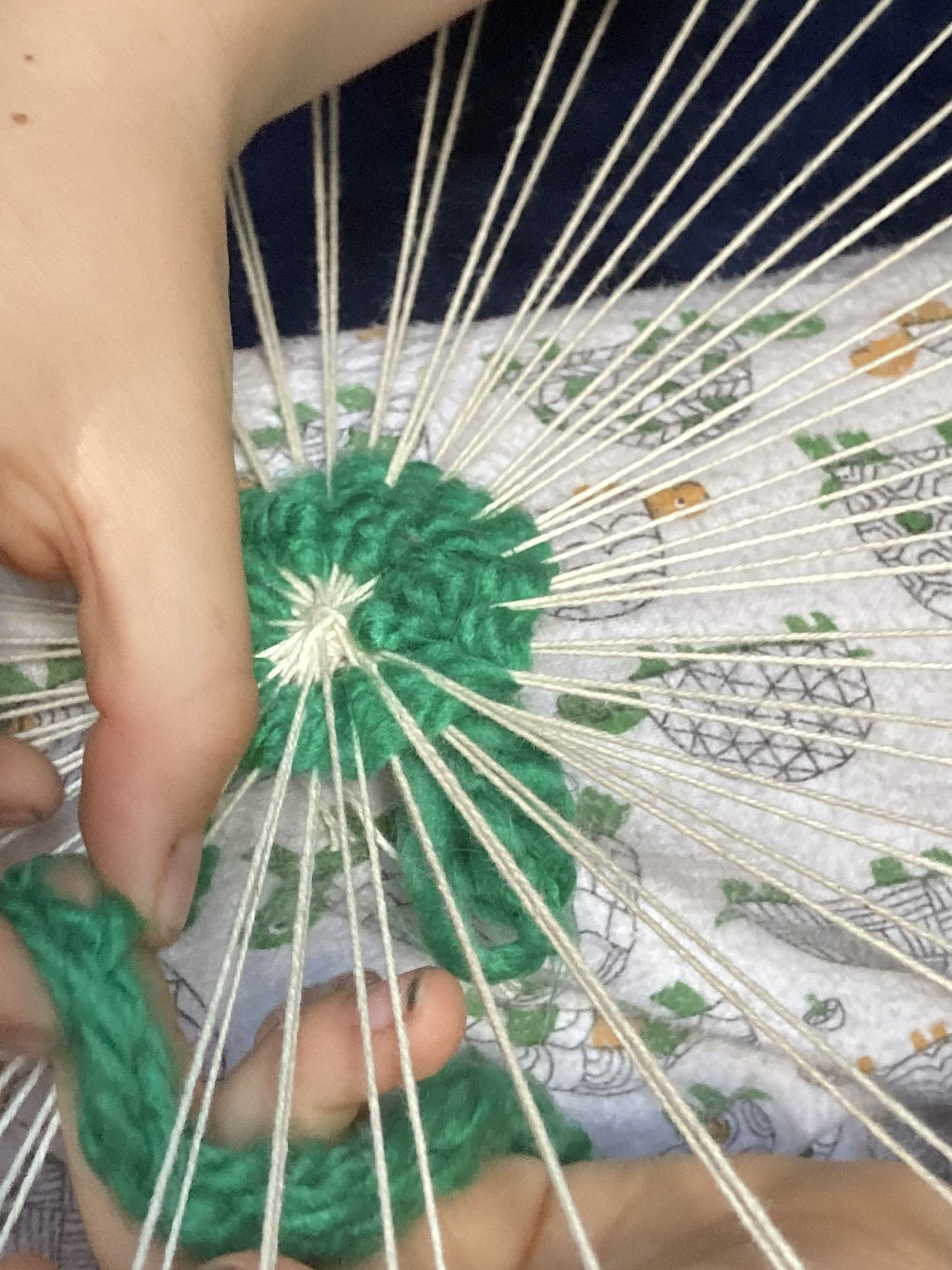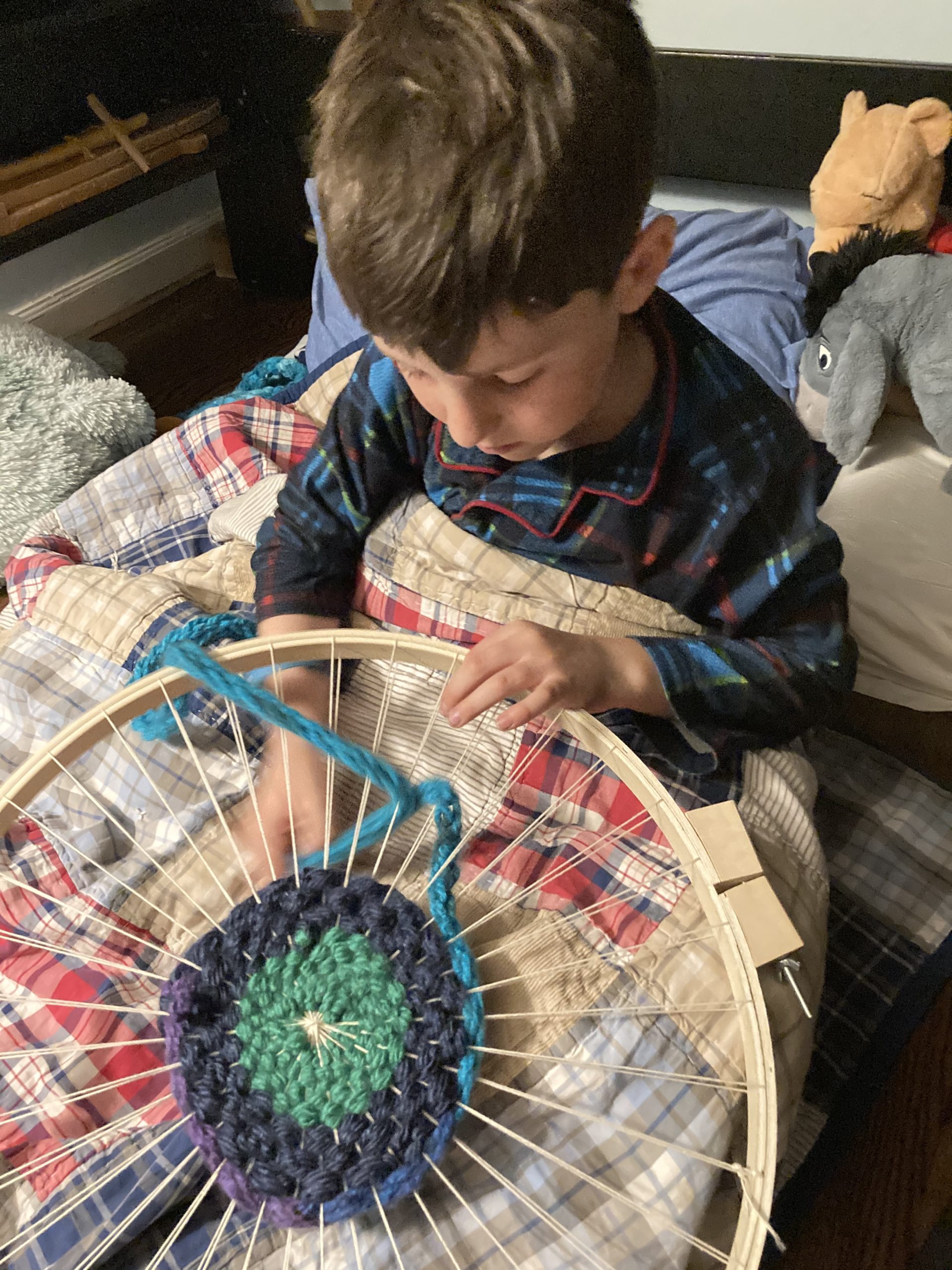April 25, 2021
Weaver John, a song by Benjamin Russel Hanby (1833-1867)
Down in a cottage lives Weaver John
And a happy old John is he
Maud is the name of his dear old dame
And a blessed old dame is she.
Refrain
Whick-ity, whack-ity, click and clan
How the shuttles do glance and ring,
Here they go, here they go forth and back
And a staccato song they sing.
Close by his side is his gentle wife
And she’s twirling the flaxen thread,
Sweet to his ear is the low wheel’s hum,
It was purchased when they were wed.
Pussy* is frisking about the room
With her kittens one, two, three, four,
Towser is taking his forty winks
On the settle behind the door
Soft as the hum of the dame’s low wheel,
Does the music of time roll on,
Morning and noon of a useful life
Bring a peacefully setting sun

During our recent spring cleaning, I cleared out my six-year old’s art cabinet. He has a big stash of finger-knitting strands that either had to go, or be included in some handwork projects. We decided to brighten his room with a radial weaving. This project can be challenging for his age, but manageable. It improves fine motor coordination and planning, and works with all spatial dimensions: forward-back, left-right, above-below. Practicing movements through all of these directions in space, in both large and small ways, is crucial for developing spatial awareness and integrating midlines. According to current neurological research, the fingertips are very dense in nerve endings and exercising fine motor dexterity has a direct effect upon cellular development in the brain. The rhythm of weaving is soothing to the soul, and one could consider the quality of weaving radially from inside-out or outside-in and what differing therapeutic effects this might have on a child.
A couple years ago when I took up circular weaving, I found several helpful articles at The Weaving Loom to get me started. In one, she provides detailed instructions for warping your embroidery hoop. In a follow-up article, she continues to explore circular weaving with some tips for weaving the weft fibers. We used her techniques on a large embroidery hoop. Depending on the skill level of the child, I suggest setting up the warp for them and either weaving the first couple of rounds for them or with them. Those rounds of weft are a little “messier” and it can be tricky to decipher which warp strings should be woven together.

After these first rounds, my son easily took off with it. He has really enjoyed this as a restful activity and he is very proud of his work. When I showed him how to tie on a new finger-knit strand and started weaving it along, he quickly stopped me saying, “Mama, this MY weaving!” I am really eager to see his lovely work hanging on the wall.


Acacia, is this a project that you take off the loom when it is finished, or is it permanently attached to the hoop?
Sue, thank you for your question. You can make this project either way.
I think an embroidery hoop is lovely and makes a weaving easy to hang, but you can also remove the weaving from it to use again. We are removing my son’s weaving by trimming and tying together each pair- front and back- of warp strings along the edge of the hoop. Afterwards, we will use one of his finger knit strands, tying each end to one of the widest points of the upper half of the weaving so that it does not fold when we hang it on the wall. Having two points of hanging also helps keep it flat. Previously, I’ve also “woven” a strand of yarn around and along a dowel rod to secure it on the back for hanging. I hope you give it a try and enjoy the process. It’s really lovely!